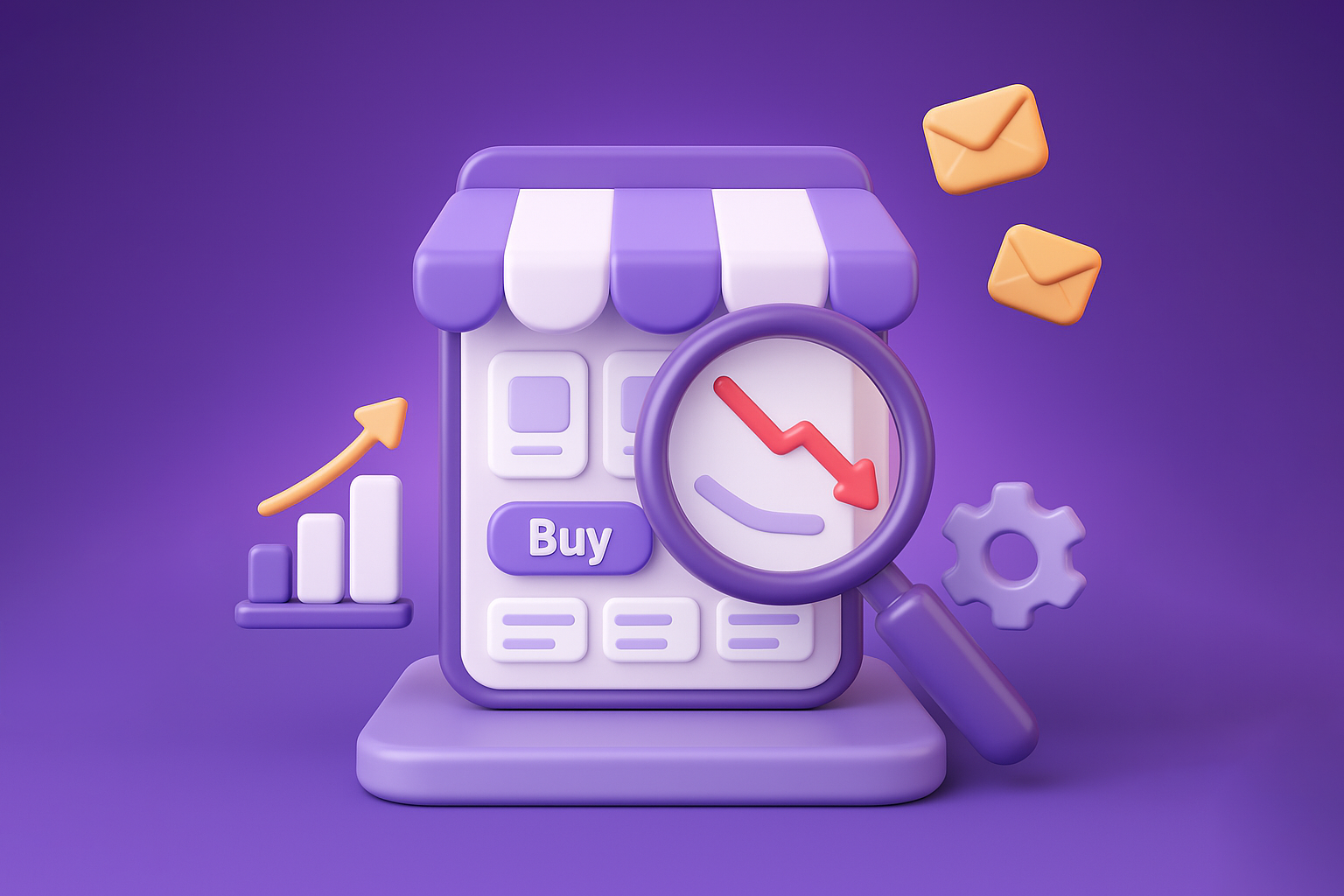
Running a Shopify store can be exciting, but it may be frustrating when your sales don't match your expectations. You've set up an attractive storefront, stocked it with great products, and even invested in marketing. But despite your best efforts, customers just aren't completing their purchases. Many store owners find themselves puzzled over what’s going wrong.
Understanding why your Shopify store isn't converting can be complex, but there's hope. Whether it's about fine-tuning the user experience or crafting clearer product descriptions, there are tangible steps you can take. The aim is to identify the roadblocks preventing your customers from clicking the "buy" button and then address them effectively.
It’s essential to know why visitors are leaving without purchasing. Let's explore some common reasons behind low conversion rates in your Shopify store:
- A cluttered or confusing layout can drive customers away fast. If users can't find what they're looking for within seconds, they'll likely move on to another store that's easier to navigate. Consider ensuring a clean, straightforward design that allows visitors to browse smoothly.
- When shoppers visit your site, they want to know what sets your products apart. If your value proposition doesn't clearly explain why your products are worth buying, they may feel unsure and hesitate to make a purchase.
- Online shoppers often look for signals that assure them of a site's credibility. These can include customer reviews, a clear return policy, and a secure checkout process. Without these elements, potential buyers might worry about the safety and reliability of making a purchase from you.
- Your products might look great, but if the descriptions don't provide enough details or fail to highlight important features, customers could be left guessing. Consider using vivid descriptions that focus on the benefits and include key details that make your items appealing.
- Nothing derails a potential sale faster than a complicated, lengthy checkout process. Shoppers seek a seamless transaction where they can pay quickly and easily. Streamlining checkout with fewer steps and a guest checkout option can help in reducing abandoned carts.
By understanding these common issues, you can begin diagnosing and addressing why your Shopify store isn't meeting its sales potential. Identifying the root causes creates a strong foundation for transforming visits into sales. The next step involves diagnosing these problems efficiently so that you can implement effective solutions.
Now that you know what might be causing low conversions, the next step is figuring out exactly what's affecting your store. Start by using analytics tools to gain insights. Google Analytics, for example, can help track visitor behavior, showing where users might be dropping off. By identifying high-exit pages, you can focus improvements on those areas.
Customer feedback is another invaluable tool. Direct feedback from your shoppers can highlight specific issues they're encountering. Utilize surveys or follow-up emails to gather insights straight from the source. Ask about their shopping experience and any difficulties they faced. This input can pinpoint areas that need attention.
Experiment with A/B testing to understand what changes can make the greatest impact. By testing different versions of a page or feature, you can see what works best for your audience. Maybe a simpler design or a more direct call-to-action increases user engagement. Collect the data and refine your approach based on what you find effective.
Once you've diagnosed the issues, applying the right strategies can turn browsing visitors into paying customers. Here are some effective ways to boost your store's conversions:
Keep your design clean and intuitive. Customers should find what they need quickly. Consider organizing categories clearly, having a search bar, and ensuring your site is mobile-friendly. A smooth and clear navigation path helps retain visitor interest and encourages exploration.
Detailed, appealing product descriptions that highlight benefits and features can guide purchasing decisions. Ensure that images are high-quality and accurately represent the product. It's all about making the customer feel confident that they know exactly what they're buying.
Display customer reviews and ratings prominently on your product pages. This transparency builds trust. Offering a simple and clear return policy also reassures shoppers, making them more comfortable completing a purchase.
Streamline your checkout by minimizing steps and offering a guest checkout option. Avoid asking for unnecessary details during the purchase process. Keep it quick and straightforward to prevent drop-offs.
Use data to suggest products your customers are likely interested in. Personalized recommendations based on browsing history or past purchases can enhance their shopping experience and encourage additional sales.
Focusing on understanding and addressing these conversion challenges can transform your Shopify store into a thriving business. By diagnosing the specific hurdles your customers face and implementing strategies tailored to your audience, you're setting the stage for improved sales and a better shopping experience.
Remember, change doesn't happen overnight. Observing customer behavior, making tweaks, and seeing their effects is an ongoing process. Each adjustment is a step closer to converting visitors into loyal customers who trust your store and value what you offer. As you refine your approach, keep these strategies in mind to stay aligned with your customers' needs and foster a smooth shopping experience.
Ready to see real results in your Shopify store? Partner with Rocket CRO Lab to leverage the expertise of an eCommerce conversion rate optimization agency that understands the unique challenges you face. Our tailored, data-driven strategies are designed to boost your conversions and improve your bottom line. Start turning visitors into loyal customers with our proven approach today!

.png)